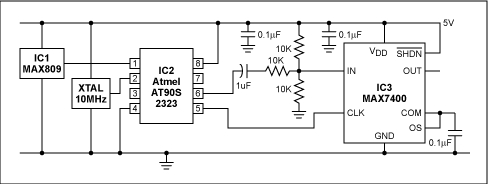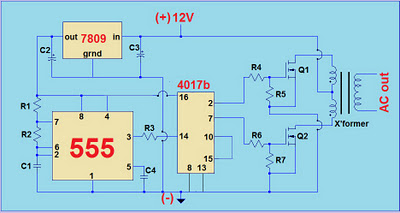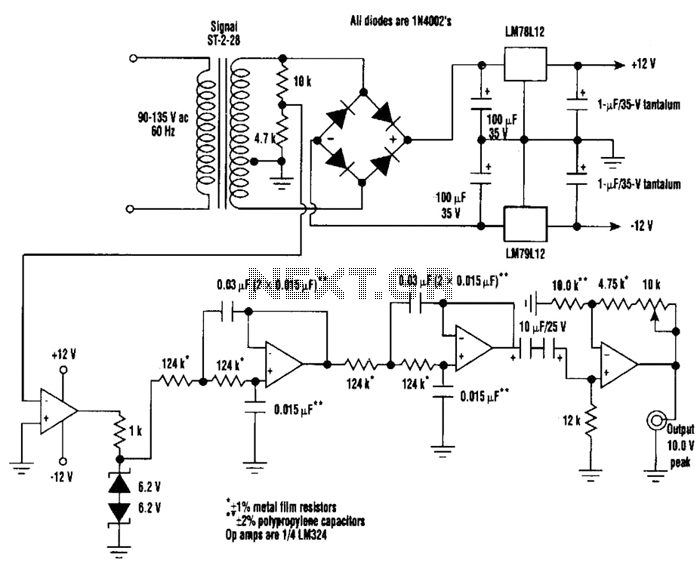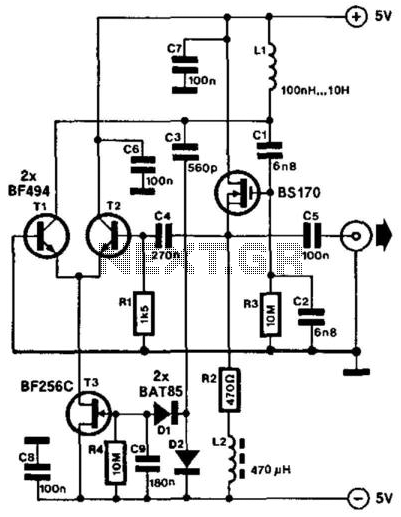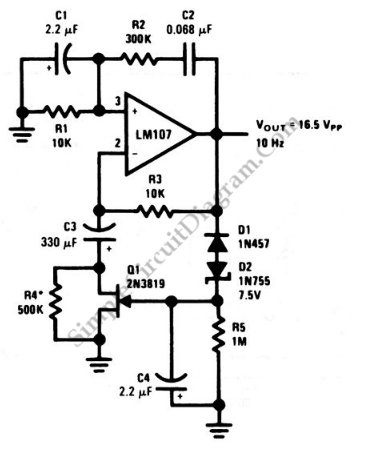
Sine-wave shaper
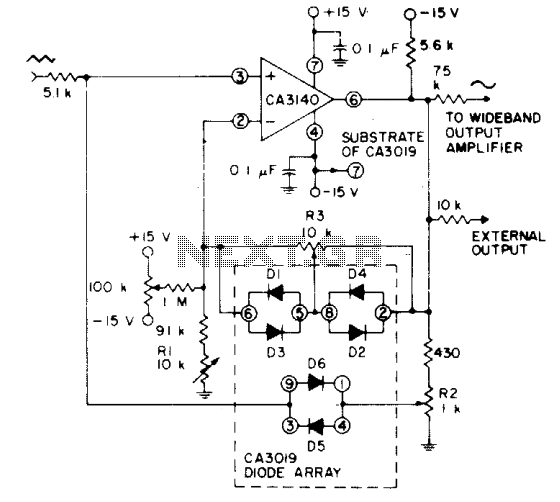
Utilizes a CA3140 BiMOS operational amplifier configured as a voltage follower, along with diodes from a CA3019 array, to transform a triangular signal (such as that produced by a function generator) into a sine-wave output with a typical total harmonic distortion (THD) of less than 2%.
The circuit employs a CA3140 BiMOS operational amplifier, which is known for its high input impedance and low output impedance characteristics, making it ideal for voltage follower applications. The op amp is configured in a non-inverting configuration to ensure that the output voltage closely follows the input voltage, thereby providing a buffered output that maintains signal integrity.
The triangular waveform input, generated by a function generator, is fed into the non-inverting input of the CA3140. The output of the op amp is then connected to a diode array, specifically the CA3019. This array consists of multiple diodes configured to shape the waveform. The diodes allow for selective clipping and smoothing of the triangular waveform, effectively converting it into a sine wave.
The output from the diode array is then monitored, and adjustments can be made to the circuit components, such as the resistor values or diode selection, to optimize the output sine wave characteristics. The design aims for a total harmonic distortion (THD) of less than 2%, ensuring that the output signal maintains high fidelity and is suitable for applications requiring precision waveform generation.
Overall, this circuit exemplifies a practical approach to waveform shaping using operational amplifiers and diode arrays, demonstrating the versatility and effectiveness of analog components in signal processing applications.Uses a CA3140 BiMOS op amp as voltage follower, together with diodes from a CA3019 array, to convert a triangular signal (such as obtained from a function generator) to a sine-wave output with typical THD less than 2%. 🔗 External reference
The circuit employs a CA3140 BiMOS operational amplifier, which is known for its high input impedance and low output impedance characteristics, making it ideal for voltage follower applications. The op amp is configured in a non-inverting configuration to ensure that the output voltage closely follows the input voltage, thereby providing a buffered output that maintains signal integrity.
The triangular waveform input, generated by a function generator, is fed into the non-inverting input of the CA3140. The output of the op amp is then connected to a diode array, specifically the CA3019. This array consists of multiple diodes configured to shape the waveform. The diodes allow for selective clipping and smoothing of the triangular waveform, effectively converting it into a sine wave.
The output from the diode array is then monitored, and adjustments can be made to the circuit components, such as the resistor values or diode selection, to optimize the output sine wave characteristics. The design aims for a total harmonic distortion (THD) of less than 2%, ensuring that the output signal maintains high fidelity and is suitable for applications requiring precision waveform generation.
Overall, this circuit exemplifies a practical approach to waveform shaping using operational amplifiers and diode arrays, demonstrating the versatility and effectiveness of analog components in signal processing applications.Uses a CA3140 BiMOS op amp as voltage follower, together with diodes from a CA3019 array, to convert a triangular signal (such as obtained from a function generator) to a sine-wave output with typical THD less than 2%. 🔗 External reference

